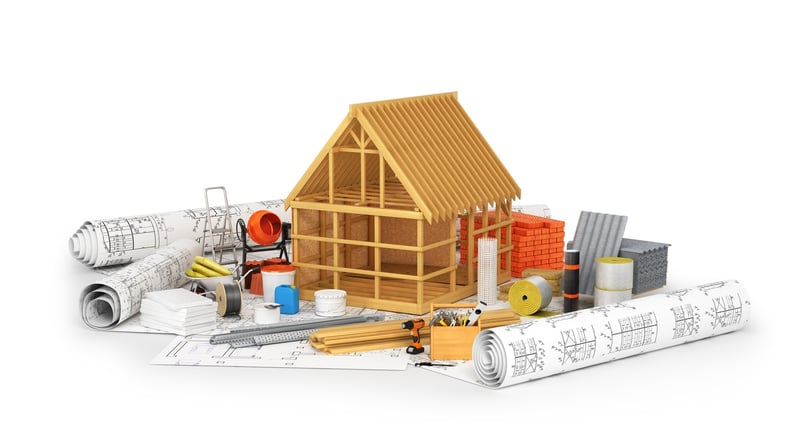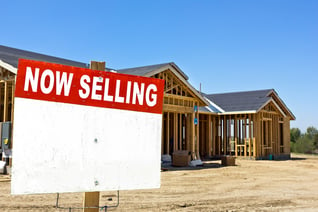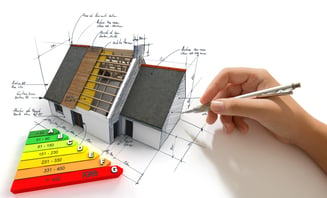
The building materials industry has experienced significant change in recent years — granite is the “new” Formica; two-by-six framing is as common as two-by-fours; and wood (solid, laminate, engineered or reclaimed) has replaced wall-to-wall carpeting as the flooring of choice for many Americans. Beyond this veneer of change is a fundamental framework of industry growth, sustainability, technology, do-it-yourself homeowners, and the need for simplified installations.
The focus is on sustainable products and technology, but other trends are also having a profound influence on the building materials industry. Many of these disruptive changes are interdependent, and as expected, there is a direct correlation between construction and building materials.
Part one of this series looks at industry growth and sustainability. See part two for information about technology, DIY and simplified installations.
Industry Growth
 As predicted by sources including Associated General Contractors of America (AGC), growth in the construction and building materials industries continues to trend up in 2018.
As predicted by sources including Associated General Contractors of America (AGC), growth in the construction and building materials industries continues to trend up in 2018.
“Seventy-five percent of construction firms plan to expand their payrolls in 2018 as contractors are optimistic that economic conditions will remain strong as tax rates and regulatory burdens fall,” stated the AGC on Jan. 3 2018 when it released the results of a joint survey with Sage Construction and Real Estate.
“We’re happy to report that all signs indicate a strong year ahead for the building materials industry,” wrote Bill Rossiter in his January 2018 article “[and] there are expectations that the demand curve for new homes won’t begin to take a dip until around 2021.”
This optimism was generally fulfilled during the subsequent months as corroborated by numbers from the federal government. On Aug. 16, the U.S. Census Bureau and U.S. Department of Housing and Urban Development jointly stated modest change:
- Privately-owned housing units authorized by building permits increased 4.2 percent from July 2017 to July 2018. Numbers were most favorable in the West where the increase was 13.8 percent.
- Privately-owned housing units authorized, but not started increased 23.2 percent year over year (YOY).
- Privately-owned housing units started decreased 1.4 YOY. Numbers were most favorable in the Midwest where the increase was 18.1 percent.
- Privately-owned housing units under construction increased 4.8 percent YOY.
- Privately-owned housing units completed decreased 0.8 percent YOY. Numbers were most favorable in the Northeast where the increase was 18.9 percent.
Sustainability
Demand for green building materials has been growing for the last few years and there is no end in sight. American consumers prefer sustainable building materials for their carbon negative/low carbon footprint as well as the reduced toxic exposure in the home and workplace. They also crave products that are made locally; salvaged, refurbished or remanufactured; durable and resilient to natural disasters; moisture resistant; energy efficient; easy to maintain; and create less production waste.
The building materials industry has responded to consumer demand for safer products. People now want to know how the manufacturing process affects the environment in terms of the consumed natural resources and the creation of hazards and pollution, and the industry now accommodates organic architecture and biodegradable materials in the design of homes and commercial spaces.
Consumers and home buyers also want to see measurable results such as certifications.
Certification
The U.S. Green Building Council (USGBC) developed the Leadership in Energy and Environmental Design (LEED) program in 1993, and it is now the most widely used green building rating system in the world. “Available for virtually all building, community and home project types, LEED provides a framework to create healthy, highly efficient and cost-saving green buildings. LEED certification is a globally recognized symbol of sustainability achievement.”
Developed by the U.S. Centers for Disease Control and Prevention (CDC) and the General Services Administration (GSA), the Fitwel program is a “a high impact building certification designed to support healthier workplace environments and improve occupant health and productivity.” Fitwel has been adopted by several leaders in the construction and building materials industries.
Certification is also offered in academia. For example, the Sustainability and the Built Environment Certificate Program at the UC Davis Extension is “offers a comprehensive curriculum on how to plan, design, construct and manage communities from a more sustainable perspective.”
Green Products
Sustainable building materials are hardly new; consider that fired-clay bricks were introduced 5,000 years ago (see our related article about the “Red Side of Green Brick”). Today there are literally thousands of products to choose from, including reclaimed wood, bamboo flooring, wall systems such as straw bale construction or recycled plastics, airflow panels, gray-water irrigation systems, energy-efficient and integrated-solar roofing shingles, Grasscrete, low or no VOC paint, Ecosmart drywall, light-colored asphalt, plastic roadways, smart exterior siding and insulation, and more.
Miscellaneous
Yesteryear’s product-driven building materials market has responded to the demand for safer, energy-efficient, connected and easy-to-stall products by consumers and contractors.
 In order to remain competitive, building materials producers, wholesalers and retailers must continue to meet this demand, provide stellar customer service and tech support, and stock sufficient inventory.
In order to remain competitive, building materials producers, wholesalers and retailers must continue to meet this demand, provide stellar customer service and tech support, and stock sufficient inventory.
When it comes to pay, both consumers and contractors look for favorable payment terms. This is where CrossCheck steps in at the point of sale to streamline the purchasing process with solutions that make buying easy.
For example, its Check on Delivery (COD) service is tailor-made for building materials transactions because payments are guaranteed before the delivery trucks roll. Here’s how it works.
Building materials dealers receive an approval number after entering the estimated amount of the sale and the customer’s phone number on CrossCheck’s online Merchant Check Center. Delivery drivers pick up check payments after dropping off orders. Back in the office, checks are scanned with desktop imagers and the data is sent to CrossCheck via its online Merchant Check Center where dealers enter the final amount and the check number. CrossCheck handles the rest, including the banking if dealers use COD in conjunction with electronic processing such a Remote Deposit Capture (RDC).
Download our free “Check on Delivery Insider’s Guide,” to learn how CrossCheck can help increase sales at your build materials center.



